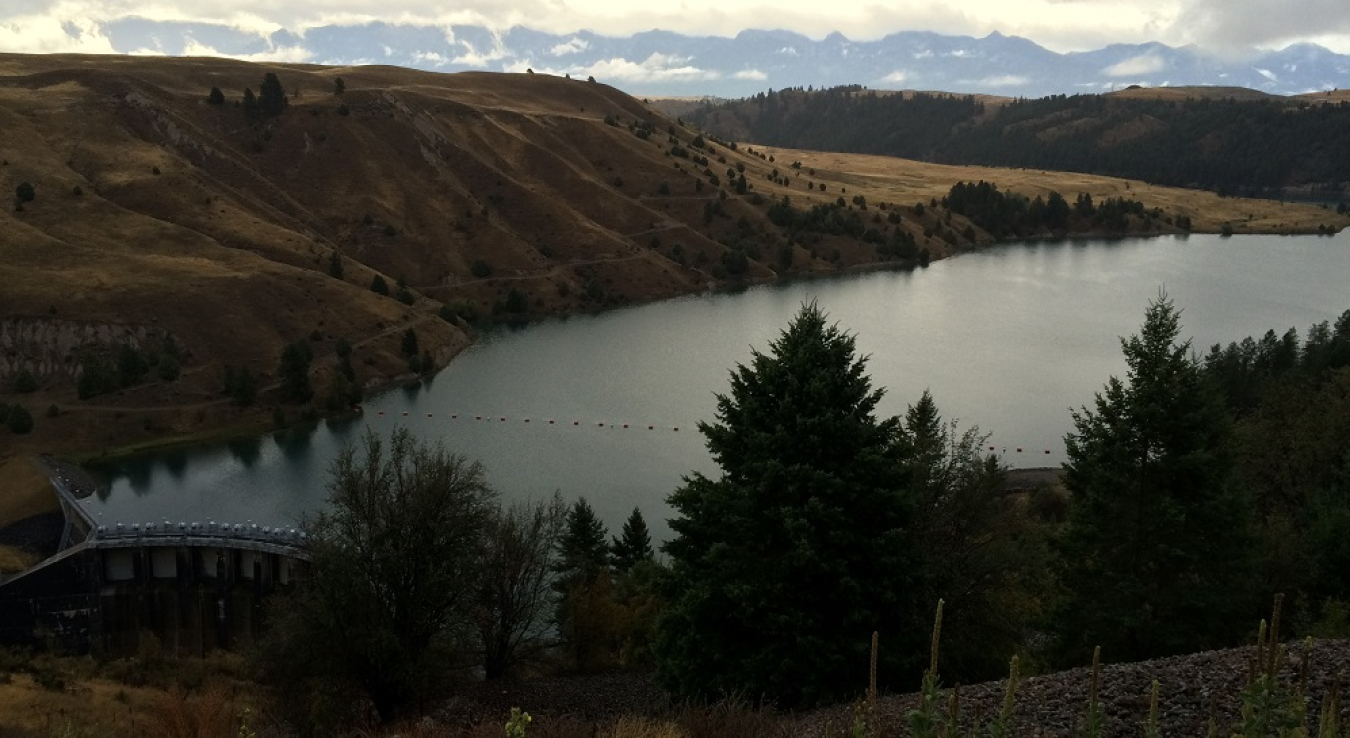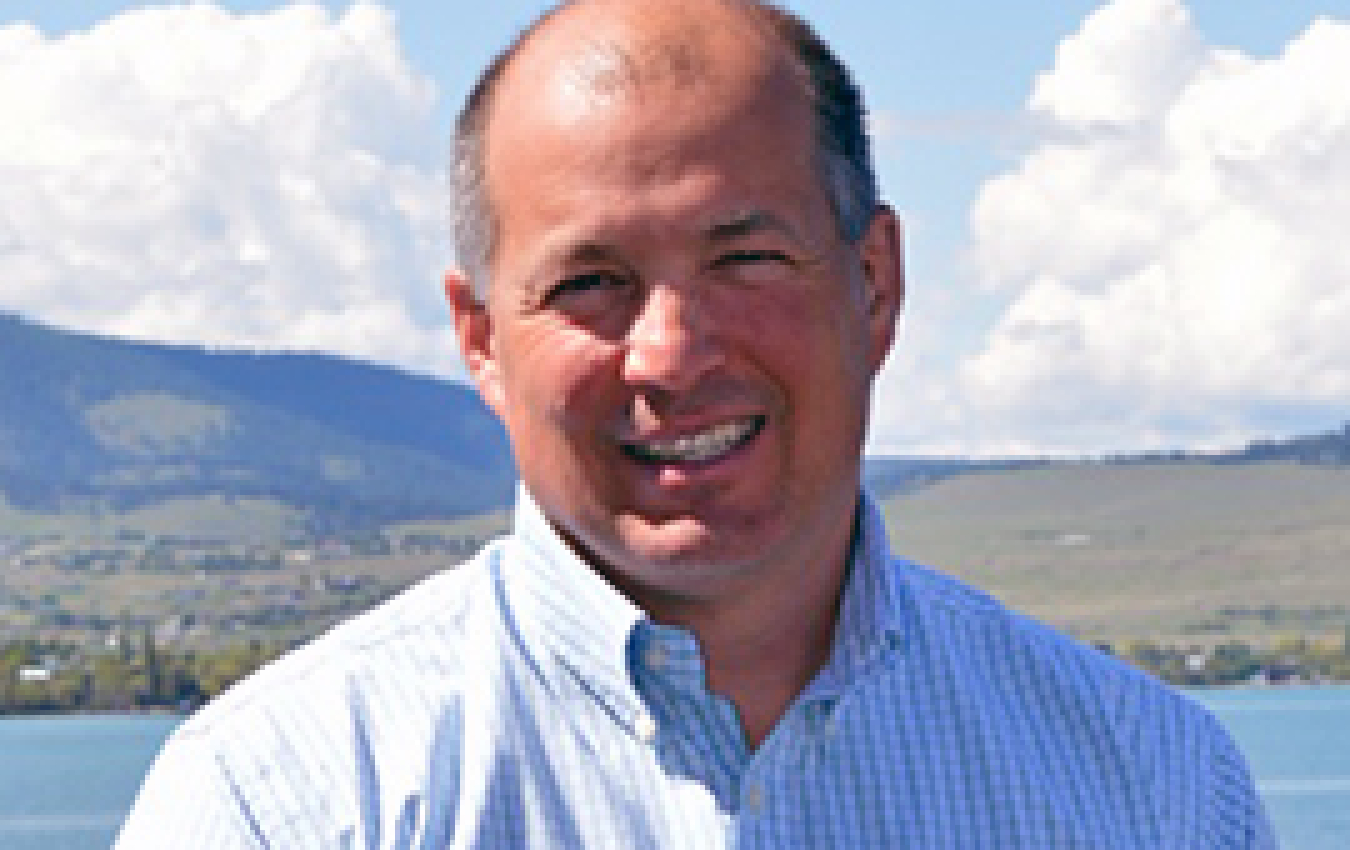A short interview with Brian Lipscomb, president and CEO of Energy Keepers, Inc., who manages the Confederated Salish and Kootenai Tribes’ dam.
Office of Indian Energy Policy and Programs
September 16, 2015
The Se̓liš Ksanka Ql̓ispe̓ Dam, located in Polson, Montana, is the first tribal owned hydroelectric facility. Photo by Jami Alley.
Brian Lipscomb is president and CEO of Energy Keepers, Inc., a tribal corporation established in the fall of 2012 to manage the Confederated Salish and Kootenai Tribes’ (CSKT’s) acquisition of Kerr Dam. On Sept. 5, 2015, CKST became the first Tribes in the nation to own a major hydroelectric facility. Formerly Kerr Dam, Salish Kootenai Dam (Se̓liš Ksanka Ql̓ispe̓ Dam) is located near Polson, Montana, on the Flathead River and close to Flathead Lake, the largest natural lake west of the Mississippi. After the acquisition, we had a chance to chat with Lipscomb about the project’s significance and CSKT’s plans for the dam going forward.

For those who don’t know the history, could you provide a little bit of context on the significance of Kerr Dam from the tribal perspective?
The Rocky Mountain Power Company (RMPC), a subsidiary of Montana Power Company (MPC), constructed the project infrastructure starting in 1930 with a 50-year license issued by the Federal Energy Regulatory Commission (FERC). RMPC transferred the license to MPC in 1938 when construction was completed and operations were initiated. In 1976, the project was due to be relicensed, so CSKT filed a competing license application and, over a nine-year period, negotiated with the MPC and others to arrive at a settlement in 1985. This settlement is embodied in the current 50-year license that, until today, was jointly held by CSKT and MPC; MPC had the right to occupy and use the project for the first 30 years of the term, and CSKT had the right to occupy and use the project for the last 20 years (2015–2035) as sole licensee. MPC sold its interest to PPL Montana in 1999, which sold that to Northwestern Corporation (which held the license until September 5, 2015).
The dam is on tribal land and has used tribal resources for a long time. It’s an important religious and cultural site for us, and now we’re reclaiming it. During the era the dam was planned and constructed (from 1920–1939) the U.S. government was striving to assimilate tribal people into the rest of society. The strategy to attempt to accomplish this was to turn us into farmers by taking our reservation land, dividing it into allotments, and handing it out to individual Indians. Remaining allotments would be provided to non-tribal homesteaders so an irrigation system was included as way to increase the number of allotments. A portion of this irrigation project—pumping—required power, which was to be provided from a run-of-river facility at this site. This plan was forced upon the tribes, requiring us to adjust our resources and way of life to navigate its impacts. Owning and operating the project is a milestone for the tribes as we continue to reacquire, manage, and protect Flathead Reservation resources and recover from these devastating actions of the early 1900s.
What is Energy Keepers (EKI), and what has its role been?
The tribes, through a strategic planning process starting in 2010, created EKI. In the fall of 2012, EKI was established to implement our option to acquire the facility. The corporation was the best decision, so we began exercising our Section 17 (of the Indian Reorganization Act) rights, with our goals being to protect and acquire Kerr Dam, market it, and manage the power. Energy Keepers helped us build staff with the right knowledge and prepare for operations and marketing of the power.
Tell us about the support the Energy Department provided to advance the goals of CKST and Energy Keepers.
DOE helped with a couple capacity-building grants and with feasibility analysis for a potential biomass plant that we may consider at a later time. Any support is so important. It shows us that the President has prioritized supporting renewable energy across Indian Country. These efforts help offset costs that we would have otherwise incurred to start up and get this thing running.
How did you go about building the skills within the community to operate the dam once the tribes acquired it?
I cannot take credit for all the tribal members who have stepped up to attain the appropriate skills to help out in operating this facility. Personally, I have had a long career and developed inner relationships within the industry. I’ve worked with the tribes and outside resources from a system-wide perspective. We had to build staff. We started with training—particularly hydropower operator training and apprenticeship—which was provided by Northwestern Energy. In January 2015, we began operating the facility, hands-on, under Northwestern ownership.
We’ve implemented education contests in order to educate tribal members. That’s how one of our members got his master’s in business for global energy management from the University of Colorado at Denver. We have people with law degrees and business degrees, and many are doing ongoing training through Northwestern or other outside experts. We had 27 positions; over half are filled by tribal members.
What have been some of the biggest challenges—and lessons learned—through this process?
First, over the last 30 years, we’ve learned that the wholesale marketplace is highly volatile. While this is a primary source of income for the CSKT, the challenge is how to make that a predictable income. Knowing that, we had to be very thoughtful in how we structured ourselves financially. It’s a commodity market. The energy management policy aligns EKI with the tribal government profile and the payment—there’s technical work behind us achieving tribal goals. This is on a 24/7 basis; it’s very much like the stock market, and we have to operate within that.
Another challenge would be getting people to realize the risks involved. We bring people on in this highly competitive arena, and we have to make sure we are compensating people appropriately and commensurate with the rest of the energy business world and outside this space. If not, they’re not going to come in the first place, or they’re not going to stay. We can’t afford a lot of turnover. Educating people about competing with the rest of the energy world will lower our risk for interruption of sales as well as moderate our risks for participating in the marketplace. We had to think about where the dollars were going to come from and be ready to take over the facility on day one. It took quite the investment and startup capital.
Aside from the overarching success of bringing this monumental 30-year effort to fruition, what do you see as some of the greatest successes achieved along the way?
We successfully gave to the tribes by sharing the conveyance price. With the help of DOE and others, we were able to pursue and acquire over $12 million in grants to start the acquisition process. We put a management policy in place and continued to implement that in the takeover of the facility. We approached and created business contracts for acquisition with 30 parties. We’re able to sell and purchase power with them. We’ve sold all the power we’re generating today. That’s no small feat given the fact that all the companies we deal with have contracts themselves. We had to provide a line of credit and deal with credit ratings—things that get quite sophisticated. We brought on 27 highly qualified people and on boarded all the computer systems; we installed and built the necessary software; and we have a process management system.
We recognize that specific economic projections are proprietary, but in broad human terms, how would you characterize the benefits of this acquisition for the CSKT?
For the first time in 80 years, we have control over our own resources. Flathead Lake and Flathead River are the lifeblood of our people. We’ll benefit completely from this facility, and the net revenue will go back to the tribes 100%. And tribal members benefit from the newly created jobs as we move forward.
What is the vision for the future of Se̓liš Ksanka Ql̓ispe̓ Dam now that the CSKT has realized the long-held goal of regaining control of this asset?
Now we will operate it most efficiently given the resource constraints. Wildlife depends on it. We’re going to maintain its functionality in future licenses. We’ll continue to invest in its mechanical components to make it efficient and economic.
Update: On November 9, 2015, the Federal Energy Regulatory Commission (FERC) issued an order approving the tribes’ request to change the name from Kerr Dam to Se̓liš Ksanka Ql̓ispe̓ (Salish Kootenai) Dam as a way to honor of the indigenous people of the land in their language. “FERC’s action is an honor to our people, who sacrificed so dearly in both the construction and acquisition of this facility,” said Lipscomb. “Our focus to date has been on acquiring Kerr Dam; now our focus is on owning and operating Se̓liš Ksanka Ql̓ispe̓ Dam.”

